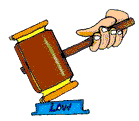The first thing to remember is that not all lawsuits are going to be exactly the same – for example, the procedure in a criminal case is not exactly the same as a civil case. Having said that, the basics of a lawsuit will be similar.
 The following are the 7, what we should probably have called “core”, stages to a lawsuit:
The following are the 7, what we should probably have called “core”, stages to a lawsuit:
Core Lawsuit Stages
Stage 1: Filing the Court Papers
In a criminal case the court papers will either be filed by the federal government or the state – so we will leave criminal cases aside here. However, in a civil case it’ll be up to you, or more appropriately your lawyer, to start the legal proceedings off by filing with the court documents that are known as “pleadings”. In these pleadings you will set out a summary of the facts that transpired and the reason why you think the law has been broken – in other words, the reason why you believe you have a case.
Once you have submitted the pleadings, the court will then send the other party what is known as a “summons” informing them that pleadings, which now become known as the “complaint”, have been filed against them. The other party will then have a pre-prescribed period of time to answer the complaint filed against them. Now, here the other party is not required to counter-claim your claim, per se. Rather they dissect your complaint and respond to it paragraph by paragraph with either a “admitted”, “denied” or “insufficient knowledge to admit or deny” tag.
Having filed the complain and answer, and assuming there is not counter-claim or cross-claim, we then move on to stage 2.
Stage 2: Choosing a Jury
One of the wonders of living in a democracy is that we nearly always have the right to have our court case tried in front of a “jury of our peers”. On the other hand, as anyone who has watched Court TV can tell you, one of the inherent problems with our modern legal system is the time it takes to select a jury!
In short, the district where the court is located will call a number of people to join the jury panel of your case. At this time, the judge, the other person’s lawyer, and your lawyer can all ask each of these jury members a number of questions – either about the case or in general. If any of these people don’t like the answers they are being given, then they can excuse that jury member (although there is a maximum overall number of potential juries that can be exempted). So, with all this questioning and excusing going on, expect this process to take some time.
Stage 3: Opening Statements
Having sat through jury selection, and having finally decided a jury and a day on which to start the trial, you can now look forward to opening statements – or arguments as they are sometimes (wrongly) called in the movies. In opening statements your lawyer will set out before the jury why he thinks you have a good (“sound”) case to bring the case and what the jury should do to remedy the case. He’ll also set out how he intend to prove this over the coming days/months of the trial.
After your lawyer, as the plaintiff, has given his opening statement, then the defendant’s lawyer will give his opening statement, which will effectively rebut your lawyer’s opening statement.
Stage 4: Witness and Expert Testimony and Cross-Examination
Once the opening statements are out of the way, we then get into the part of the case that gets most law drama fans excited – the examination and cross-examination of the witnesses and experts.
In fact, in normal proceedings this is a fairly dull process, taking no more than a couple of days, and is merely a few people standing up and swearing that the facts to the case are as you have claimed.
Stage 5: Closing Arguments
Once the Quincy like excitement of the examinations is out of the way, each of the lawyers then has the chance to give a closing argument, where they will remind the jury all of the salient facts that have arisen during the case that support their case.
Stage 6: Jury Instruction
Following closing argument, the judge will then instruct the jury on what matters of law there may be. At this time, if the facts are clear-cut enough, the judge can even “direct” the jury to give a particular judgment. Failing which, the jury will take themselves off to the jury room to deice whether to give you or the defendant the judgment.
Stage 7: The Verdict
When the jury returns, they’ll tell the court what their decision is. In cases where damages can be determined by the jury, they may give this as well. The judge will then consider the jury’s decision, and if he agrees he’ll give a verdict as the jury has directed. However, if he disagrees with either the jury’s verdict, or the level of damages that the jury has awarded, it is within his right to enter a verdict he see fit.
Following the verdict you’ll then move on to stages 8, 9, 10 and so on of the case. These are more commonly known as “the appeal”, “getting the defendant to pay”, and so on.